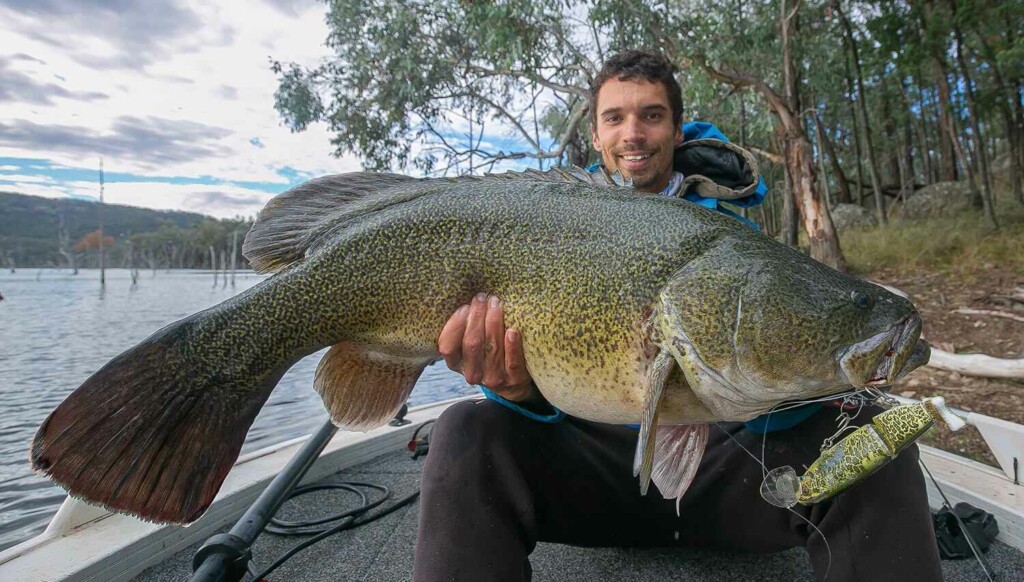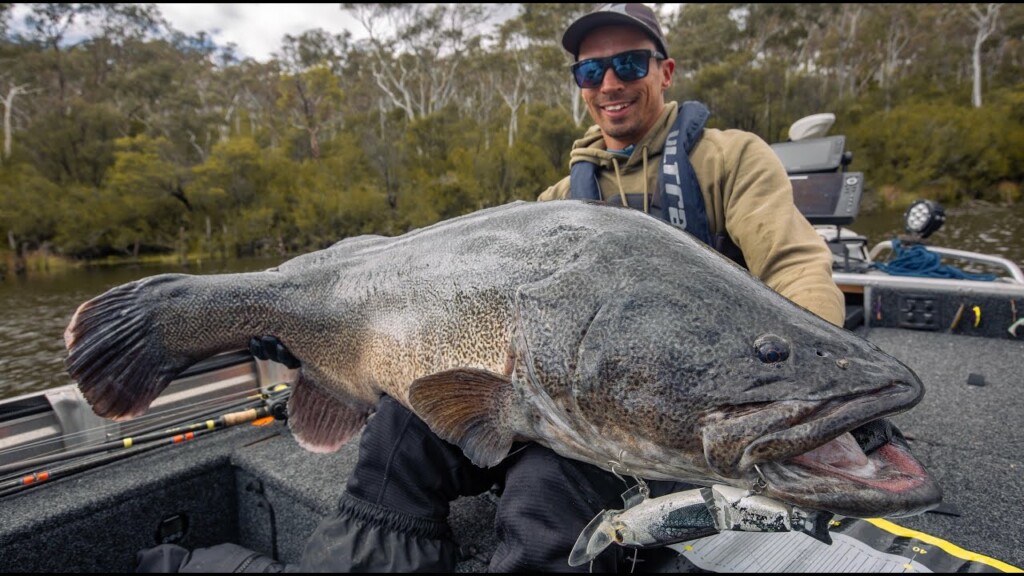Australia’s waterways hide a diverse array of aquatic creatures, but few capture the imagination like the Murray cod. In this article, we plunge into the depths of the Murray River to uncover the story of the biggest Murray cod ever caught, shedding light on this remarkable freshwater giant.

The Murray Cod
The Murray cod (Maccullochella peelii) is a native Australian freshwater fish known for its size, strength, and elusive nature. Found primarily in the Murray-Darling River system, this apex predator has played a significant role in both Indigenous culture and recreational fishing.
The Largest Murray Cod Ever Caught
- The Mighty Murray Monster
- Measurement: The largest recorded Murray cod weighed an astonishing 113 kilograms (approx. 249 pounds) and measured over 1.8 meters (6 feet) in length.
- Location: The cod was caught in the Ovens River, Victoria, showcasing the potential of these fish to grow to impressive sizes.
- A Legendary Catch
- Measurement: A close contender for the title of the largest Murray cod weighed around 100 kilograms (approx. 220 pounds) and measured about 1.75 meters (5.7 feet) in length.
- Location: This massive cod was hooked in the Murray River, demonstrating the species’ dominance in various Australian waterways.
- An Ancient Giant
- Measurement: Among the largest Murray cod ever documented, one fish weighed approximately 95 kilograms (approx. 209 pounds) and spanned approximately 1.7 meters (5.5 feet) in length.
- Location: This mighty specimen was captured in the Darling River, New South Wales, further underscoring the wide distribution of these colossal fish.
- The River Behemoth
- Measurement: Another awe-inspiring Murray cod reached a weight of around 80 kilograms (approx. 176 pounds) and stretched nearly 1.6 meters (5.2 feet) long.
- Location: Anglers reeled in this river giant from the Murrumbidgee River, showcasing the diverse habitats that these fish inhabit.
- Tales of the Trophy Fish
- Measurement: Murray cod nearing the 80-kilogram mark and measuring over 1.5 meters (4.9 feet) in length have been proudly caught and released by dedicated anglers.
- Location: These catches have been reported from various rivers across the Murray-Darling Basin, highlighting the extensive range of the species.
The Murray Cod in Australia
The Murray cod’s historic presence in Australian waterways is both culturally significant and ecologically important. It has been a vital source of sustenance for Indigenous communities for generations, and today it continues to attract recreational anglers seeking the thrill of catching these river giants.
Fishing for Murray Cod
Fishing for Murray cod is a pursuit that requires patience, skill, and respect for the environment. Anglers often employ various techniques, including casting lures, using bait, and trolling in different parts of the river. Given the cod’s size and strength, the fight to land one can be a true test of an angler’s abilities.
Conservation and Catch-and-Release
Due to overfishing and habitat degradation, Murray cod populations have faced significant challenges. Conservation efforts and catch-and-release practices have become essential to preserving these iconic fish for future generations. Many fishing enthusiasts advocate for responsible fishing practices to ensure the sustainability of the Murray cod population.

The Murray cod stands as a living testament to Australia’s diverse and unique aquatic life. From its remarkable size to its cultural and ecological significance, the Murray cod has captured the hearts of anglers and nature enthusiasts alike.
As efforts continue to protect its habitats and sustain its populations, the legend of the Murray cod lives on, inspiring both awe and a commitment to conservation.




Companies That Support Israel: A List to Avoid
Does Red Bull Support Israel? Decoding the Unraveled Connection
Is Dunkin’ Donuts Supportive of Israel? Explained
The 15 Biggest Woolworths Supermarkets in Sydney
Does These Firearms Support Israel? Exploring the Unraveled Connection
Does These Tech Brands Support Israel? Decoding the Unraveled Connection
Does These Filmography Support Israel? Understanding the Intricate Ties
Does These Online Business Support Israel? Exploring the Unraveled Connection